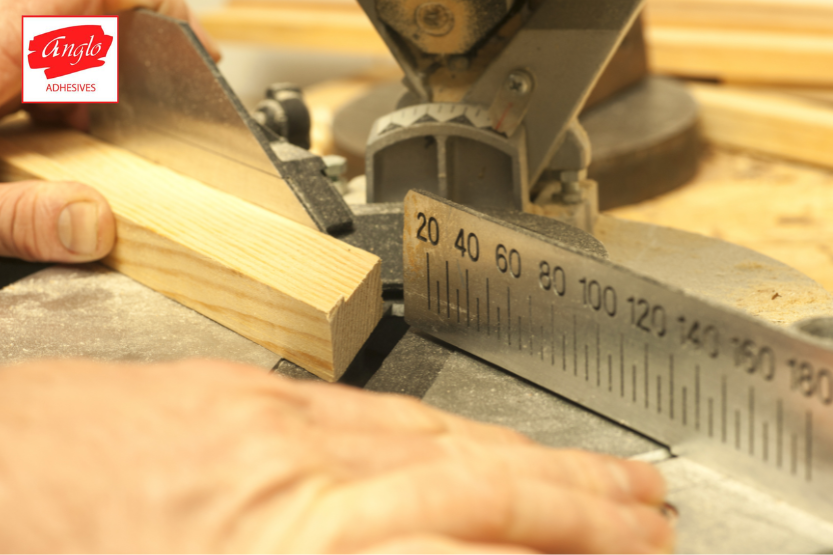Blog
Strong Butt Joints: Understanding the Basics

Woodworking joints are necessary to link two pieces of wood to make a single, strong structure. A butt joint is one of the simplest lumberworking joints and is normally used in many woodworking projects. This joint is moderately easy to make and requires minimal gears, making it perfect for beginners. In this feature, we will look at the basics of strong butt joints, the different types, and how to craft them.
What is a Butt Joint?
A butt joint is a straightforward woodworking joint in which two pieces of lumber are connected together at their ends. In this joint, the end grain of one piece is attached to the other long grain. Butt joints are effortless to make and require minimum tools, but they are not very sturdy, especially when compared to other types of joints.
Types of Butt Joints
There are different classes of butt joints, and each has its own distinctive characteristics. The following are some of the most general types of butt joints:
Plain Butt Joint
The plain butt joint is the basic type of butt joint. It involves joining two pieces of wood by only placing them end-to-end and bonding them together. This type of joint is not very tough and is typically used for short-term joints or for joints that will be reinforced with extra types of joints. Pain butt joints can be used where strength isn’t critical. Think picture frames, panelling, or decorative trim.
Beveled Butt Joint
The beveled butt joint is comparable to the plain butt joint, but the end of one piece of wood is slanted at an angle, creating a slanting joint. This joint provides a bigger surface area for glueing, making it slightly stronger than the plain butt joint. Beveled butt joints are commonly used in structural steel fabrication for beams, columns, and other load-bearing members.They are also used in piping systems where high strength and leak-tightness are required.
Mitered Butt Joint
The mitered butt joint is a joint in which the ends of two pieces of wood are cut at a 45-degree angle and then attached together to create a right angle. This joint is regularly used in picture frames and other ornamental projects.
Dowel Butt Joint
The dowel butt joint entails drilling holes into the ends of two pieces of wood and then placing dowels into the holes to grip the pieces together. This type of joint is stronger than the plain and bevelled butt joints but requires more accuracy. Dowel butt joints are commonly used in furniture making to join boards together to create tabletops, shelves, cabinet doors, and other components.
Biscuit Butt Joint
The biscuit butt joint requires cutting a gap into the end of each piece of wood and then embedding a wooden biscuit into the slots. The biscuits are adhered in place and hold the pieces of wood together. This type of joint is strong and demands minimal tools. Biscuit butt joints can be used in panel construction, joining narrower boards to create wide panels for tabletops, doors, or shelves.
Pocket Screw Butt Joint
The pocket screw butt joint includes drilling angled holes into one piece of wood and then fitting screws into the second piece of wood through those holes. This joint is easy to make and is moderately strong. Pocket screws are a quick and easy way to assemble drawer boxes, utility cabinets, and attach shelves to uprights in shelving units.
Strengths and Weaknesses of Butt Joints
Butt joints are uncomplicated to make and require few tools, making them ideal for novices. They are also helpful for temporary joints or for joints that will be reinforced with other types of joints. However, strong butt joints should be made so it won’t fall short under stress. The strong butt joint depends on the quality of the glue used, the surface area of the joint, and the arrangement of the pieces.
The Benefits of Adhesives for Strong Butt Joints
While screws and nails have long been the go-tos for creating strong butt joints, adhesives are emerging as a powerful alternative. Not only can they offer strength comparable to traditional methods, but they also provide several unique advantages.
Adhesives distribute stress more evenly across the entire joint area, unlike the point-loading of screws or nails. This significantly reduces the risk of splitting or weakening the wood, leading to more reliable and strong butt joints. Additionally, adhesives can fill small gaps and uneven surfaces, creating a seamless bond that prevents moisture ingress and enhances overall joint integrity. Their ability to fill gaps and uneven surfaces creates a flawless, uninterrupted joint, perfect for projects where aesthetics are a priority.
The choice between adhesives and traditional methods depends on the specific project requirements. However, the potential for superior strength, even stress distribution, and enhanced aesthetics makes adhesive a compelling option for creating reliable and strong butt joints.
Techniques and Strategies for Making Strong Butt Joints
To build strong butt joints, here are some instructions and pointers you can follow:
- Use high-quality wood adhesive that is intended for the type of wood you are using.
- Enlarge the surface area of the joint by using a bevelled, mitered, dowel, biscuit, or pocket screw joint.
- Make sure the pieces are placed before gluing them together.
- Secure the pieces tightly to assure a strong butt joints bond.
- Permit enough time for the glue to dry before removing the clamps.
Butt joints are one of the most common and frequently used lumberworking joints. They are trouble-free to make and involve minimal tools, making them ideal for newbies. Nonetheless, they are not very well-built and can fail under stress. By following the tips and techniques we have listed, you can make strong butt joints that will last.